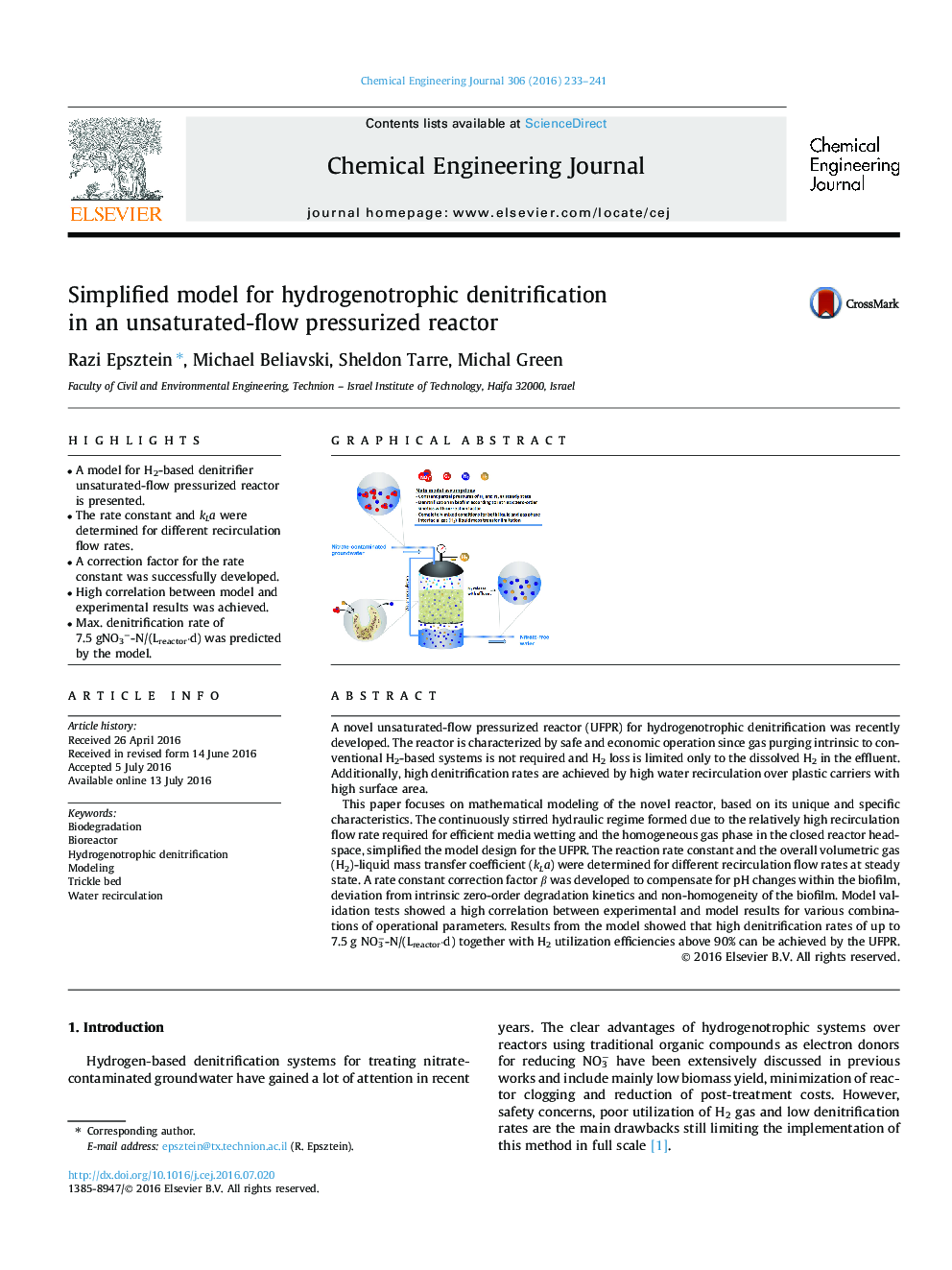| Article ID | Journal | Published Year | Pages | File Type |
|---|---|---|---|---|
| 145251 | Chemical Engineering Journal | 2016 | 9 Pages |
•A model for H2-based denitrifier unsaturated-flow pressurized reactor is presented.•The rate constant and kLa were determined for different recirculation flow rates.•A correction factor for the rate constant was successfully developed.•High correlation between model and experimental results was achieved.•Max. denitrification rate of 7.5 gNO3−-N/(Lreactor·d) was predicted by the model.
A novel unsaturated-flow pressurized reactor (UFPR) for hydrogenotrophic denitrification was recently developed. The reactor is characterized by safe and economic operation since gas purging intrinsic to conventional H2-based systems is not required and H2 loss is limited only to the dissolved H2 in the effluent. Additionally, high denitrification rates are achieved by high water recirculation over plastic carriers with high surface area.This paper focuses on mathematical modeling of the novel reactor, based on its unique and specific characteristics. The continuously stirred hydraulic regime formed due to the relatively high recirculation flow rate required for efficient media wetting and the homogeneous gas phase in the closed reactor headspace, simplified the model design for the UFPR. The reaction rate constant and the overall volumetric gas (H2)-liquid mass transfer coefficient (kLa) were determined for different recirculation flow rates at steady state. A rate constant correction factor β was developed to compensate for pH changes within the biofilm, deviation from intrinsic zero-order degradation kinetics and non-homogeneity of the biofilm. Model validation tests showed a high correlation between experimental and model results for various combinations of operational parameters. Results from the model showed that high denitrification rates of up to 7.5 g NO3−-N/(Lreactor·d) together with H2 utilization efficiencies above 90% can be achieved by the UFPR.
Graphical abstractFigure optionsDownload full-size imageDownload as PowerPoint slide
